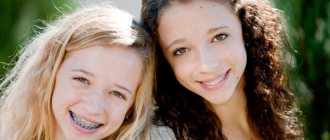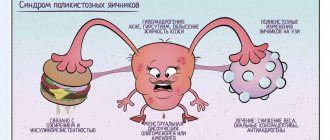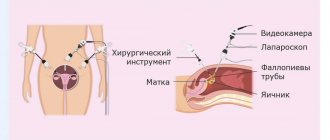Hormones are regulators of all systems and organs of the body. In women, the functional state of the endocrine glands primarily determines reproductive health. All hormones influence each other, so a failure in the production of one of them leads to the development of other hormonal disorders. Therefore, it is so important to identify and correct the disease in a timely manner. First of all, disruption of the production of sex hormones affects the menstrual cycle. Endocrine diseases often cannot be completely cured, but an adequate quality of life can be restored and normal well-being can be restored with the help of medications.
There are usually two reasons for disruption of hormone production: congenital disorders that are established in utero and appear at a certain stage of life, or acquired. The second category includes, in particular, the consequences of taking pharmaceutical hormonal drugs.
The possibility of complete restoration of the endocrine system and other body systems depends on the severity of the disorders and their causes. At the moment, for almost all hormonal diseases, there are effective treatment regimens that allow you to get rid of unpleasant symptoms - but before selecting treatment, you will have to undergo a full diagnosis and establish the cause of the disorder.
What is hormonal balance and its importance
Everything in the body is interconnected. For the optimal functioning of all systems and organs, biologically active substances - hormones - are necessary. They are produced by endocrine glands. The course of all vital processes depends on these substances. Thanks to them, a woman can conceive and bear a child.
All these substances must be present in the body in a certain amount. Their excess or deficiency leads to various failures. The ratio of hormones in the male and female body is different.
The main hormones in women:
- Estrogen
Produced mainly by the ovaries. The correct development of the reproductive system in a girl during puberty depends on these hormones. They are responsible for the development of the uterus, fallopian tubes, and also for the formation of secondary sexual characteristics. Conception and the course of pregnancy depend on estrogen. This hormone is also called the hormone of youth, as it affects the condition of the skin and bones.
- Progesterone
Also an important hormone on which the regularity of the menstrual cycle depends. He is responsible for preparing the mammary glands for breastfeeding and becomes the “guardian” of the resulting pregnancy. With a lack of this substance, problems with menstruation often occur, and miscarriages and frozen pregnancies are also possible.
These are the two central female hormones, but there are others that are no less important. Among them, testosterone, prolactin, and luteinizing hormone (LH) can be distinguished into a special group. Each hormone performs a strictly defined function, so the concentration of these substances in certain periods of the cycle must correspond to the norm. Deviations, even small ones, lead to disturbances in the endocrine, reproductive and other systems of the body.
Sex hormone binding globulin (SHBG)
A blood plasma protein involved in the binding and transport of sex hormones.
There are several synonyms for the name of this protein: sex steroid binding globulin, androgen binding globulin, sex steroid binding globulin, sex hormone-binding globulin. This glycoprotein is synthesized in the liver; its molecular weight is about 80,000 - 100,000 daltons, the molecule has 1 binding site for steroid hormones. SHBG binds testosterone and 5-dihydrotestosterone with high affinity and estradiol somewhat weaker.
Testosterone circulates predominantly as bound to SHBG, and to a lesser extent to albumin and cortisol-binding globulin. Because variations in carrier proteins can influence circulating testosterone concentrations, SHBG is usually determined in addition to total testosterone measurements. The level of SHBG synthesis in the liver depends on sex hormones: estrogens increase, and androgens reduce its production. Therefore, the SHBG content in women is almost twice as high as in men. With a decrease in estradiol production, the total content of the hormone and the concentration of free hormone in the blood decrease in parallel.
With a decrease in androgen production, an increase in SHBG production causes total testosterone to remain constant, although the concentration of free hormone decreases. Therefore, plasma total testosterone levels may be paradoxically normal in early stages of testicular disease. Reduced SHBG levels are often found in hirsutism, acne vulgaris and polycystic ovary syndrome. With hirsutism, a decrease in SHBG is described in approximately 30% of women examined.
SHBG levels may be significantly increased in late pregnancy or after estrogen administration. Androgen administration is often combined with decreased SHBG levels. The Free androgen index (FAI), calculated as the ratio of total testosterone to SHBG in %, correlates with biologically available free testosterone and is used as a useful indicator of pathological androgen status.
After age 60, SHBG levels increase by approximately 1.2% per year, so with age, the level of biologically available testosterone decreases to a greater extent than the level of total testosterone.
What causes hormonal imbalances?
Both internal and external factors can influence the production of biologically active substances. Let's look at the most common reasons.
Endocrine diseases
The production of certain hormones depends on the state of the endocrine system. This is the main center, which consists of endocrine glands. These include the ovaries, pituitary gland, pancreas and thyroid glands, pineal gland, adrenal glands. Any deviations in these organs automatically lead to disruptions in the functioning of the body. The most common endocrine diseases are:
- diabetes;
- hypothyroidism - occurs due to disturbances in the functioning of the thyroid gland. This pathology is often the cause of chronic fatigue in women.
- Goiter is an enlargement of the thyroid gland. Often occurs in women due to age-related changes.
- Itsenko-Cushing syndrome. It is characterized by excess hair growth and weight gain. Occurs due to overwork of the adrenal glands.
Any disturbances in the functioning of the endocrine system first provoke the development of inflammatory diseases in the pelvic organs or reproductive system. If treatment is not started at this point, infertility will subsequently occur.
Adolescence or puberty
Until adolescence, the hormonal levels in boys and girls are approximately the same. But with the onset of puberty, each sex begins to produce its own hormones, on which the development of the genital organs and secondary sexual characteristics depends.
During this period, increased production of biologically active substances is considered normal. From about 11-12 years of age, under their influence, a complete restructuring of the endocrine system occurs. The production of growth hormone is also important during this period. This hormonal boom explains the difficulty of adolescence.
Before puberty, it is difficult to recognize any abnormalities in hormone production. Congenital anomalies of the genital organs can lead to the fact that in adolescence a girl will not have enough female hormones. The hereditary factor is also important. To assess a teenager’s hormonal levels, you need to visit a pediatric gynecologist or endocrinologist.
Taking hormonal medications
Taking certain medications can also lead to hormone imbalance. The most common cause is oral contraception, which contains estrogen or gestodene. There is especially a risk of disrupting hormonal balance when self-prescribing contraceptives.
Modern drugs have a low dose of hormones, but nevertheless only a doctor can prescribe them. You must first check your hormonal levels and take tests.
Emotional disturbances, stress
The endocrine system is very sensitive to stress and anxiety. Under the influence of negative strong emotions, the pituitary gland releases a large amount of adrenaline, a stress hormone, into the blood. It is necessary for the short-term mobilization of all the body's resources. But prolonged or frequent stress leads to the fact that this hormone is constantly released into the body, which forces the endocrine glands to work to the limit. This leads to hormonal imbalances.
Adrenal problems
Diseases of the adrenal glands also lead to an excess or deficiency of biologically active substances such as cortisol, catecholamine, and sex hormones. Most pathologies are associated with benign neoplasms - cysts and/or adenomas. In order to diagnose them on time, it is necessary to attend preventive examinations.
Neuroendocrine regulation disorders
This includes any pathology of the hypothalamic-pituitary system, which includes the hypothalamus, pituitary gland and peripheral glands. These can be traumatic brain injuries, malignant tumors, strokes, encephalitis.
Unhealthy Lifestyle
Drinking alcohol leads to a constant release of cortisol into the blood. With frequent libations, an excess of this hormone leads to disturbances in the emotional sphere. Anxiety, depression, and apathy appear. And this in turn leads to increased work of the pancreas.
Alcohol also negatively affects the functioning of the adrenal glands, causing it to constantly produce the stress hormone (adrenaline). Under its influence, the amount of the female hormone estrogen decreases. As a result, masculine traits begin to predominate in a drinking woman - a rough voice, decreased skin elasticity, and the menstrual cycle is disrupted. Premature aging and the onset of early menopause are possible.
Poor nutrition, namely eating fatty foods or fast food, leads to metabolic disorders. And as you know, obesity is one of the diseases of the endocrine system. Strict diets and a passion for veganism often also become the cause of general physical exhaustion. In this case, a complete cessation of menstruation is possible due to a lack of nutrients and vitamins.
Gynecological diseases
Diseases of the female reproductive system that can cause hormonal disorders:
- uterine fibroids;
- endometriosis;
- polyps in the uterine cavity;
- ovarian dysfunction;
- endometrial hyperplasia.
Pregnancy, childbirth
In order for the female body to be able to bear a child, it needs restructuring in a new way. Therefore, after conception, the production of some important hormones increases significantly. The first biologically active substance, the amount of which increases sharply, is hCG. It is by its quantity that it is determined whether pregnancy has occurred or not. Its deficiency indicates the fading of pregnancy in the early stages.
The production of progesterone and estrogen also increases. During pregnancy, they help cope with the increased load on the body. Usually after childbirth it takes 2-3 months for hormonal levels to normalize. But you should know that if a woman is breastfeeding, then an increased amount of hormones is also normal.
Climax
After 40-45 years, ovarian function declines. As a result, the production of female hormones also decreases. This affects the entire body, so it adapts to a new system of work. Because of this, general health deteriorates, a woman begins to age faster, and diseases of the musculoskeletal system arise, in particular osteoporosis.
Important! Even after the cessation of menstruation, hormones are produced in minimal quantities for another 1-2 years. During this period, pregnancy may occur.
These are the main reasons that lead to hormonal disorders in the female body. But provoking factors can also include living in environmentally unfavorable areas, working in hazardous industries and other factors.
Cortisol (Hydrocortisone)
Steroid hormone of the adrenal cortex; the most active of the glucocorticoid hormones.
Regulator of carbohydrate, protein and fat metabolism. Cortisol is produced by the zona fasciculata of the adrenal cortex under the control of ACTH. In the blood, 75% of cortisol is bound to corticosteroid binding globulin (transcortin), which is synthesized by the liver. Another 10% is weakly bound to albumin. Cortisol is metabolized in the liver, the half-life of the hormone is 80-110 minutes, it is filtered in the glomeruli and eliminated in the urine.
This hormone plays a key role in the body's defense response to stress. It has a catabolic effect. Increases the concentration of glucose in the blood by increasing its synthesis and reducing utilization in the periphery (insulin antagonist). Reduces the formation and increases the breakdown of fats, promoting hyperlipidemia and hypercholesterolemia. Cortisol has little mineralocorticoid activity, but when it is formed in excess, sodium retention in the body, edema and hypokalemia are observed; a negative calcium balance is formed. Cortisol potentiates the vasoconstrictor effect of other hormones and increases diuresis. Cortisol has an anti-inflammatory effect and reduces the body's hypersensitivity to various agents, suppressing cellular and humoral immunity. Cortisol stabilizes lysosome membranes. Helps reduce the number of zosinophils and lymphocytes in the blood while simultaneously increasing neutrophils, erythrocytes and platelets.
The daily rhythm of secretion is characteristic: maximum in the morning (6-8 hours), minimum in the evening (20-21 hours). Cortisol secretion changes little with age. During pregnancy, a progressive increase in concentration is observed, associated with an increase in the content of transcortin: in late pregnancy, a 2-5-fold increase is noted. The daily rhythm of release of this hormone may be disrupted. In the case of a partial or complete block in the synthesis of cortisol, an increase in the concentration of ACTH and the total concentration of corticoids occurs.
Limits of determination:
27.6 nmol/l-6599.6 nmol/l.
Signs of hormonal imbalance in women
Symptoms depend on age and cause. Women of reproductive age often complain of the following problems:
- Menstrual irregularities. This may include delays or absence of periods for a certain period of time (amenorrhea).
- Increased PMS.
- Severe pain during menstruation.
- Increased hair growth (hirsutism).
- Skin problems, namely acne, constant inflammation.
- Frequent mood swings for no reason.
- Decreased libido.
- Sleep disorders.
- Headache.
- Aggressiveness, anger at others, irritability.
- Brittle nails and hair loss.
- Discomfort during sexual intercourse due to a decrease in the amount of vaginal lubrication.
Often a woman associates constant fatigue with heavy household or work pressure. But often this is a sign of hormonal imbalances. This condition requires medical consultation and correction.
Symptoms of hormonal imbalance in teenage girls
In girls, the symptoms are somewhat different. This is due to the fact that they are just beginning to establish the hormonal levels necessary for an adult. Violations may be indicated by problems with the formation of secondary sexual characteristics.
You need to see a doctor if:
- There is no menstruation until the age of 16-17 years.
- There is insufficient hair growth in the armpits or pubic area.
- Mammary glands do not form.
- An irregular cycle is observed a year after the first menstruation;
An excessively thin physique or, on the contrary, a sharp weight gain can also be a sign that not everything is in order with your hormones.
How to treat hormonal imbalance in young girls? The main thing here is to do no harm. Therefore, therapy is selected only by a doctor after a thorough examination.
What could be the consequences of hormonal imbalance?
A lack or excess of biologically active substances can lead to a variety of functional disorders. A woman's reproductive function is primarily affected. Hormonal imbalance is often the cause of infertility, frequent miscarriages or cycle disorders. Other consequences are fibroids, mastopathy, vaginal polyposis. A separate group includes the formation of hormone-dependent tumors. The impetus for their development is precisely an excess of certain hormones. General poor health, irritability and low mood can contribute to the development of depression.
How to determine hormonal imbalance: diagnostic methods
A gynecologist-endocrinologist deals with hormonal disorders in the female body. He collects anamnesis and conducts an examination on a gynecological chair. For an accurate diagnosis, a number of laboratory tests are performed. To do this, you need to be tested for certain types of hormones: female hormones (hCG, prolactin, progesterone), thyroid hormones (TSH, free thyroxine) and free testosterone levels. To do this, you need to donate blood on an empty stomach.
The doctor may also prescribe additional examinations:
- Intravaginal ultrasound.
- Colposcopy.
- Ultrasound of the endocrine glands and adrenal glands.
If violations are detected, consultation with other specialized specialists is required - a therapist, a neurologist, a psychotherapist.
Our doctors
Kolodko Inna Mikhailovna
Doctor - endocrinologist, doctor of the highest category
Experience 26 years
Make an appointment
Slovesnova Tatyana Alekseevna
Endocrinologist, Candidate of Medical Sciences, doctor of the highest category
Experience 48 years
Make an appointment
Mikhailova Elena Vladimirovna
Endocrinologist, diabetologist, candidate of medical sciences
Experience 46 years
Make an appointment
Hormonal imbalance in women: treatment and prevention
Therapy includes only an integrated approach. In case of minor deviations, it is enough to normalize the daily routine. For teenagers, it is often recommended to reduce mental stress, take a course of multivitamins, give up bad habits and eat right.
During menopause, hormone replacement therapy is recommended, since the body does not have enough of its own hormones. Also, if tests reveal a hormonal imbalance in women, treatment may include:
- Following a certain diet.
- Treatment of chronic diseases of the pelvic organs.
- Check for STIs, as they provoke inflammation in the genitals.
- If there is a deficiency of any hormone, synthetic hormones are prescribed. These can be tablets, patches, injections.
- Cyclic intake of special vitamin complexes.
In rare cases, surgical intervention is performed, which consists of laparoscopy and curettage of the cervix. Typically, this method is recommended for identifying tumors whose growth depends on hormonal levels.
Folk remedies
If for some reason it is impossible to carry out hormonal therapy, you can take herbal preparations. Some herbs contain phytohormones, so they are used to restore hormonal imbalance. For this purpose, decoctions or infusions of sage, mint, oregano, boron uterus, and fenugreek are suitable. But under no circumstances should they be prescribed independently! They can be taken only after consultation and permission of the attending physician.
Important! Plants have a cumulative effect, so to obtain a positive result they are taken for a long time.
You should also remember about prevention. The female body is resilient, but it also requires attention. Be sure to visit your gynecologist regularly to identify and promptly treat gynecological diseases. Sports and proper nutrition will make the nervous system more resilient, which means stress will bypass you. If PMS intensifies, as well as cycle disorders, do not self-medicate. Hormonal disorders are diverse and their true cause can only be determined by a doctor.









